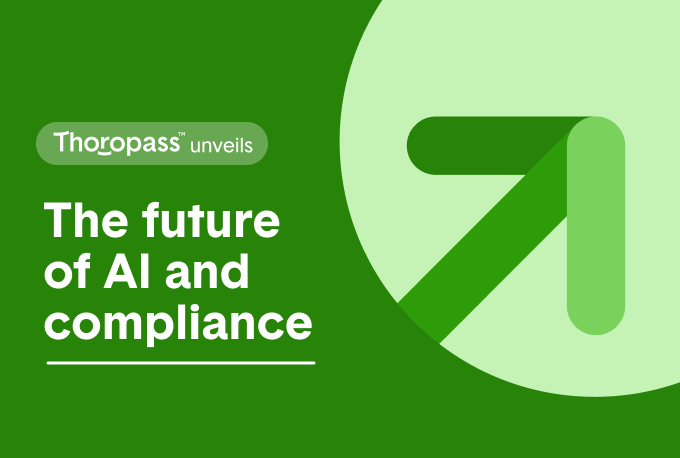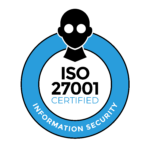As artificial intelligence (AI) continues to transform industries, it brings with it a host of benefits and challenges. Among these challenges is the emergence of shadow AI—the unapproved, unvetted, and often unseen use of AI technologies within organizations. For security officers, understanding and mitigating the risks associated with shadow AI is crucial. This post will give an overview of shadow AI, explain why it’s a growing concern, and detail how your organization can protect itself against this emerging threat.
What is shadow AI?
Shadow AI is simply any AI application (or application utilizing AI) that has not been reviewed and/or approved for use by the organization. For example, employees might use an AI-powered tool to summarize meeting notes or automate tasks without notifying their supervisors or going through the company’s official vetting process.
The prevalence of shadow AI is growing as more applications integrate AI capabilities, often without users even realizing it. This silent integration can lead to significant security vulnerabilities, especially in industries where sensitive data is handled.
All companies are at risk of shadow AI since AI use is rampant within applications,
and as more normally approved applications start introducing AI functionality – the risks continue to grow.
Jay Trinckes
CISO & DPO
Thoropass
The risks of shadow AI
All companies are at risk of shadow AI, but the risks are particularly acute for organizations with stringent data protection and security requirements. These risks include:
Data breaches
Unauthorized AI tools might adhere to different security standards than approved applications, increasing the likelihood of data breaches. AI applications often require access to vast amounts of data, and if this data is mishandled, it could lead to severe consequences.
Compliance violations
Many industries are governed by strict regulatory requirements regarding data usage and protection. The use of unvetted AI tools can lead to compliance violations, resulting in fines and reputational damage.
Intellectual property risks
AI tools can inadvertently expose sensitive company information or trade secrets. If an AI application processes proprietary data without proper oversight, it could leak this information outside the organization.
Operational disruptions
Shadow AI tools might not integrate seamlessly with existing systems, leading to operational inefficiencies or even disruptions.
How to detect shadow AI
Detecting shadow AI within your organization can be challenging, but it’s not impossible. At Thoropass, we utilize DNS filtering to identify AI-related applications and websites. While this method isn’t foolproof, it provides a valuable first line of defense.
Another effective strategy is implementing Data Loss Prevention (DLP) solutions, which help monitor and control the flow of sensitive information. The major concern is around sharing sensitive information with AI learning models; data loss prevention solutions could be used to help minimize the risk of this sharing.
Security officers should also consider conducting regular audits of the tools and applications used within their organizations. These audits can help identify unauthorized AI tools before they become a significant problem.
Steps to take when shadow AI is detected
If shadow AI is detected in your organization, it’s essential to act quickly to minimize potential threats. Here are some steps to consider:
- Block unauthorized applications: As Jay Trinckes, Data Protection Officer/CISO here at Thoropass notes, “If I come across an unauthorized program, I’ll enter it as ‘blocked’.” Blocking access to these tools prevents further use and limits potential damage.
- Investigate usage : Determine how the shadow AI tool was used, what information was shared, and whether any sensitive data was compromised. This investigation will guide your next steps.
- Educate employees: Remind employees of the organization’s application approval process. Emphasize the importance of following proper channels when introducing new tools and technologies. And, if you haven’t already, be sure to implement and train employees on an AI Governance Policy. (Don’t have one? Get a free template here.)
- Review and remediate: If the tool in question doesn’t pass your organization’s security or privacy reviews, work to have any accounts or data associated with it deleted.
“If I come across an unauthorized program, I’ll enter it as ‘blocked’.”
Jay Trinckes
CISO & DPA
Thoropass
Preventing shadow AI in your organization
Preventing shadow AI requires a proactive approach. Here are some strategies to consider:
Implement web filtering
Utilize web filtering tools that categorize AI systems. This approach helps monitor and control access to AI applications within your organization.
Enforce Data Loss Prevention (DLP)
DLP solutions can help detect and prevent unauthorized data sharing with AI tools. This step is crucial in safeguarding sensitive information.
Establish clear policies
Ensure that your organization has a formalized AI governance and use policy. Make sure that all employees are aware of this policy and understand the importance of compliance.

Free Template
[Template] AI Governance Policy
Create a comprehensive AI Governance Policy template for your organization quickly and easily
Foster a culture of security
Encourage employees to report any use of AI tools that haven’t been approved by the organization. A culture of transparency and security awareness can significantly reduce the risks associated with shadow AI.
For more information on strengthening your organization’s security posture, check out our Strategy Guide to Managing Company and Third-Party Risk.
Coping with the evolution of AI security threats
As AI continues to evolve, so too will the challenges associated with its use. Shadow AI presents a significant risk to organizations, particularly those in highly regulated industries. By understanding what shadow AI is, recognizing the risks, and taking proactive steps to prevent its use, security officers can protect their organizations from potential threats.
For those looking to take their AI security to the next level, consider exploring AI pentesting. This approach can help identify vulnerabilities in your AI systems or when integrating third-party AI systems, such as those developed by OpenAI, into your existing platforms. Learn about AI pentesting at Thoropass and how it can safeguard your business.
By addressing shadow AI head-on, your organization can stay ahead of the curve, ensuring that your AI usage is secure, compliant, and beneficial to your overall business objectives.
Enter the AI era
Explore GenAI for your business, safely and securely
Explore the suite of new offerings from Thoropass to help your organization set itself up for success in this new era of GenAI and compliance

Related Posts
Stay connected
Subscribe to receive new blog articles and updates from Thoropass in your inbox.
Want to join our team?
Help Thoropass ensure that compliance never gets in the way of innovation.














.png)